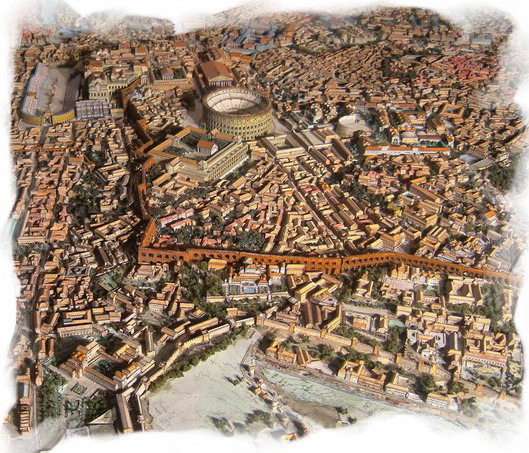This aqueduct in the centre of the picture is actually a double aqueduct,
the
Appia on the left and the
Marcia on the right. The Aqua Appia diverts directly
from the Aqua Claudia which we saw above, meanwhile the Aqua Marcia had its source
in the big Aqua Marcia Tepula Iulia, that fed the Baths of Diocletian.
These
two aqueducts went therefore through the CŠlian Hill and fed the
baths built on the Aventine, the Baths of Decius on the upper part of the hill
and the smaller Baths of Sura towards the Circus Maximus.












